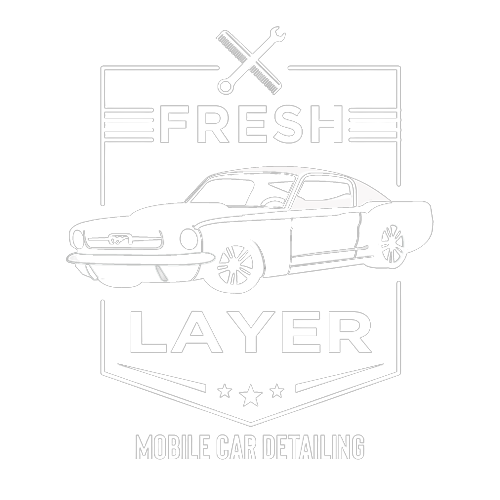Top DIY Car Detailing Hacks for San Diego Drivers
San Diego’s sunny weather and coastal charm make it a fantastic place to drive, but they also present unique challenges for car owners.
From salty ocean air to UV damage, your vehicle requires regular upkeep to stay in top shape. Professional detailing is a great option, but DIY car detailing can save you money while keeping your car looking pristine.
Dusty dashboards, messy upholstery, and those stubborn streaks on your windows can be frustrating to deal with, especially if you don't have the time or budget for professional detailing every month.
Fortunately, with the right car cleaning hacks, you can make your car shine like it just rolled out of the dealership—without breaking the bank.
In this comprehensive guide, we're diving into the best car cleaning hacks that make maintaining your vehicle easier, cheaper, and more effective.
From household products you already have to pro tips that save time, this article offers a complete guide to keeping your vehicle in tip-top shape. Let's get started.
Why DIY Car Detailing Matters in San Diego
San Diego drivers face a mix of environmental factors, including coastal salt, intense sunshine, and urban pollution. While professional detailing services are ideal for deep cleaning, many tasks can be done at home to maintain your car's appearance between appointments.
DIY car detailing is cost-effective, convenient, and rewarding. With the right tools and techniques, you can protect your car’s value, enhance its shine, and extend the lifespan of its interior and exterior.
1. The Power of Baking Soda and Vinegar for Interior Cleaning
Baking soda and vinegar are natural cleaning agents that work wonders for your car's interior. They can help you tackle stains, neutralize odors, and sanitize surfaces without the use of harsh chemicals.
Stain Removal: Sprinkle baking soda on fabric seats or carpets, and lightly spray vinegar on top. Allow it to fizz for 5-10 minutes, then scrub the area with a brush and vacuum up the residue.
Odor Neutralization: Keep a small box of baking soda under your seat to absorb odors over time. This is especially useful if you regularly transport pets or food.
2. Use a Toothbrush for Hard-to-Reach Areas
Toothbrushes are perfect for getting into the small nooks and crannies of your car's interior. Air vents, cup holders, seams between the seats, and around the gear shift can collect dust and dirt that are difficult to remove with regular wipes.
Tip: Dip the toothbrush in a mix of dish soap and water to loosen the dirt and then wipe it clean with a microfiber cloth.
3. DIY Glass Cleaner for Streak-Free Windows
A clean windshield and clear side windows are essential for safe driving. Forget using harsh ammonia-based cleaners—you can easily make an effective glass cleaner at home.
Recipe: Mix one part white vinegar with one part distilled water in a spray bottle. Spray onto windows and wipe with a microfiber towel in a circular motion to avoid streaks.
Pro Tip: Clean windows in the shade to prevent the solution from evaporating too quickly and leaving streaks.
4. Use a Foam Brush for Car Air Vents
Car air vents are notorious for accumulating dust. Foam brushes, typically used for painting, work wonderfully for cleaning air vents.
Why It Works: The slim foam design fits between the vent slats perfectly, allowing you to clean out dust thoroughly. You can dip the foam brush into soapy water or use a car interior cleaning spray for added effectiveness.
5. Dryer Sheets for Removing Bug Residue
If you frequently drive on highways, you know that bugs can be a major problem, leaving unsightly spots on your bumper, grille, and windshield. Dryer sheets are an excellent hack for this problem.
How to Use: Wet a dryer sheet and rub it gently over the bug residue. The chemical properties of the sheet break down bug bodies without scratching your car's paint.
Safety Note: Always rinse the area after using a dryer sheet to prevent residue buildup.
6. Shine Your Tires with Household Items
A shiny exterior isn't complete without sparkling tires. You can make your own tire shine using ingredients you likely already have.
DIY Tire Shine: Mix one cup of water, one cup of baby oil, and a few drops of dish soap. Apply with a sponge or a spray bottle, then wipe with a clean towel.
Alternative: If you want a more professional finish, consider a tire gel product that contains UV protection to extend the life of your tires.
7. Cleaning Leather Seats with Olive Oil and Vinegar
Leather seats require special attention to keep them supple and prevent cracking.
Leather Conditioner Recipe: Mix ¼ cup vinegar with ½ cup olive oil and apply to seats using a soft cloth. Buff in circular motions, let it sit for 10 minutes, and then wipe off the excess.
Benefits: Olive oil keeps the leather hydrated, while vinegar gently cleans away grime without causing damage.
8. The Magic of Microfiber Cloths
Using the wrong cloths can leave streaks or scratches on your car’s surfaces. Always opt for microfiber cloths, which are soft, absorbent, and non-abrasive.
Where to Use: Microfiber is ideal for cleaning windows, dashboard surfaces, and exterior detailing. It captures dust without spreading it around.
Cleaning Hack: Keep separate cloths for the interior and exterior to avoid cross-contamination of dirt and grime.
9. Combat Pet Hair with a Rubber Squeegee
Pet hair can be one of the toughest things to remove from car seats and carpets. A rubber squeegee, often used for cleaning windows, can do wonders for this issue.
How to Use: Run the rubber squeegee along the fabric surface, and the hair will gather for easy removal. For stubborn areas, spray a small amount of water to help lift the hair.
10. Use Compressed Air for Crevices
For small areas that are difficult to reach—like seat tracks, tight door compartments, and console seams—compressed air works exceptionally well.
Where to Buy: Cans of compressed air are available at most hardware and electronics stores.
How to Use: Direct the nozzle into crevices, and use quick bursts to blow out dirt and debris. Follow up with a vacuum to collect dislodged particles.
Frequently Asked Questions About Car Cleaning Hacks
How often should I detail my car with these DIY hacks?
Aim to use these DIY hacks for a thorough detailing job every three to four months. However, remember that the frequency may vary depending on your car's exposure to harsh weather conditions and your personal standards of cleanliness.
Are these DIY car detailing hacks suitable for all car models and ages?
Absolutely! These DIY car detailing hacks can be applied to most car models and ages. But, be sure to adjust the techniques and products according to the condition and specifics of your vehicle. Older or more worn-out cars may require additional care or special products to achieve the best results.
Can I use household cleaning products for DIY car detailing?
While some household cleaning products may be used for DIY car detailing, always ensure that they are safe for automotive surfaces. Some products may contain harsh chemicals or abrasives that can harm your car's paint or interior materials. We recommend sticking to automotive-specific cleaning products or DIY solutions that are mild yet effective.
Can I undertake these DIY car detailing hacks if I have limited experience?
Yes, you certainly can! These DIY car detailing hacks have been designed to be accessible for car owners of all experience levels. Just start small, build your skills progressively, and always follow the instructions carefully. Don't hesitate to consult with a professional detailer or join a workshop to gain more knowledge and confidence if needed.
Will these DIY car detailing hacks save me money compared to professional detailing services?
Yes, they can. By investing in the necessary tools and supplies at the onset, you can carry out regular detailing at a fraction of the cost. But remember, while it's important to save money, never compromise on the value of professional expertise and equipment for specialized services.
Conclusion: Master Car Cleaning with These Expert Hacks
Keeping your car spotless doesn’t have to be a costly or time-consuming affair. By using these car cleaning hacks, you can achieve professional-level results using simple, affordable products. From getting rid of stubborn stains with baking soda and vinegar to shining your tires with homemade mixtures, these tips ensure that every corner of your car is thoroughly cleaned and protected.
Next time your car needs a refresh, skip the expensive detailing appointment and put these clever tricks to the test—you’ll be amazed at the results!




